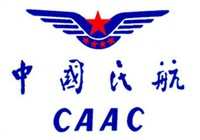Economic Factors Convince CAAC To Loosen Airspace
Restrictions
 More airspace is opening for GA flights in China,
according to the Civil Aviation Administration of China (CAAC) and
non-government sources in the country.
More airspace is opening for GA flights in China,
according to the Civil Aviation Administration of China (CAAC) and
non-government sources in the country.
“The initial airspace reforms in the flight control areas
of Changchun and Guangzhou were completed at the end of
2010,” said Jane Zhang, President of Silk Wings Aviation, a
company whose services include consulting firm for GA activity in
China. “Now the People’s Liberation Army Air Force is
organizing further work in the flight control areas of Shenyang and
Guangzhou, as well as the flight control sub-areas of Chengdu,
Lanzhou, Jinan and Nanjing.”
"It is a big step forward for all GA interests,” said
Jason Liao, NBAA’s Chief Representative in Asia. “It
almost certainly means China will become the second-largest market
in the world [after the U.S.] for GA aircraft like helicopters and
turboprops."
Until recently, almost all Chinese airspace had been tightly
controlled by the military. Even private ownership of aircraft was
illegal until 2003. In addition, the military often scheduled air
drills and weapons tests on short notice, disrupting commercial
aviation operations.
However, an official CAAC estimate of investments totaling 1.5
trillion yuan ($230 billion) in the next five years was clear
encouragement for officials to begin releasing airspace sooner
rather than later. In January and February of this year, the
government authorized helicopter test flights near the city of
Haikou, capital of the Hainan island province. Although the flights
were limited to 1,000 meters (3,280 feet), officials at the time
said they could lead to opening a portion of airspace as high as
13,123 feet (4,000 meters) throughout the nation.
Current Chinese airspace plans call for a tri-part
classification of low-altitude airspace, from the surface to 3,280
feet. The three classifications are referred to as "reporting," for
which no detailed flight plan would be required; "surveillance,"
for which a detailed flight plan would be required but prior
government permission would not, and "controlling," for which a
detailed flight plan and prior government permission would be
required. From 3,280 feet to 13,123 feet within existing airline
routes, a flight plan will be required but prior government
permission would not. Above 13,123 feet, a flight plan and prior
government permission would be required."
Removing barriers for access to Chinese airspace may be
proceeding more quickly than originally planned. A government
document titled "Opinions of the State Council and the Central
Military Commission on Deepening the Reform of China’s
Low-altitude Airspace Management" was released in late 2010 and
revealed that the PLA Air Force was designating 13 reporting, four
surveillance and 21 controlling aerial zones in the two pilot areas
of Changchun and Guangzhou. The two lowest of those areas offer GA
about 60% of the total airspace.
 “Now they’re organizing further work in
flight control areas of Shenyang and Guangzhou and the additional
flight control sub-areas of Changchun, Chengdu, Lanzhou, Jinan and
Nanjing,” said Zhang. And according to a circular issued
jointly by the State Council and Central Military Commission in
April, China plans to “thoroughly” open its
low-altitude airspace across the country by the 2015 end of the
current Five Year plan.
“Now they’re organizing further work in
flight control areas of Shenyang and Guangzhou and the additional
flight control sub-areas of Changchun, Chengdu, Lanzhou, Jinan and
Nanjing,” said Zhang. And according to a circular issued
jointly by the State Council and Central Military Commission in
April, China plans to “thoroughly” open its
low-altitude airspace across the country by the 2015 end of the
current Five Year plan.
The Shanghai Securities News recently quoted China vice minister
Wang Changshun of the CAAC as saying that China also plans to boost
its GA industry by subsidizing three to five key enterprises in the
GA arena, with preference given to aviation enterprises that
produce social benefits such as helicopter rescue flights. Given
the opening of airspace and potential Chinese subsidy of GA
enterprises, it’s not surprising that the first Air Med and
Rescue Congress China 2011 is planned for Shanghai October 11-12,
2012.
Until very recently, China had no aeromedical helicopter rescue
system other than the military. “But there’s a huge
demand for it,” said Zhang, “Several ministries became
keenly interested after the May 2008 earthquake in Sichuan,
especially the Ministry of Civil Affairs. But there are several
challenges, including the lack of a viable business model and
insurance support, lack of airport/infrastructure, lack of
operational knowledge and of course a shortage of
pilots.”
Boeing Aircraft put a sharp point on the pilot shortage issue
earlier this year, when it released a report titled, “2011
Pilot and Technician Outlook.” It predicted the greatest
growth of airline traffic in the Asia-Pacific Region, and
specifically said China will need 72,000 pilots and 108,000
technicians by 2030. Zhang said her company is already working
closely with several Chinese clients to train pilots. "GA in China
has come a long, long way since the 1980s, when any business
flights were limited to low flight levels and even stranger route
structures,” said Bill Stine, NBAA Director, International
Operations. “It's very heartening.”
 Classic Aero-TV: The Switchblade Flying Car FLIES!
Classic Aero-TV: The Switchblade Flying Car FLIES! ANN FAQ: Q&A 101
ANN FAQ: Q&A 101 ANN's Daily Aero-Term (04.12.24): Discrete Code
ANN's Daily Aero-Term (04.12.24): Discrete Code ANN's Daily Aero-Term (04.13.24): Beyond Visual Line Of Sight (BVLOS)
ANN's Daily Aero-Term (04.13.24): Beyond Visual Line Of Sight (BVLOS) ANN's Daily Aero-Linx (04.13.24)
ANN's Daily Aero-Linx (04.13.24)




